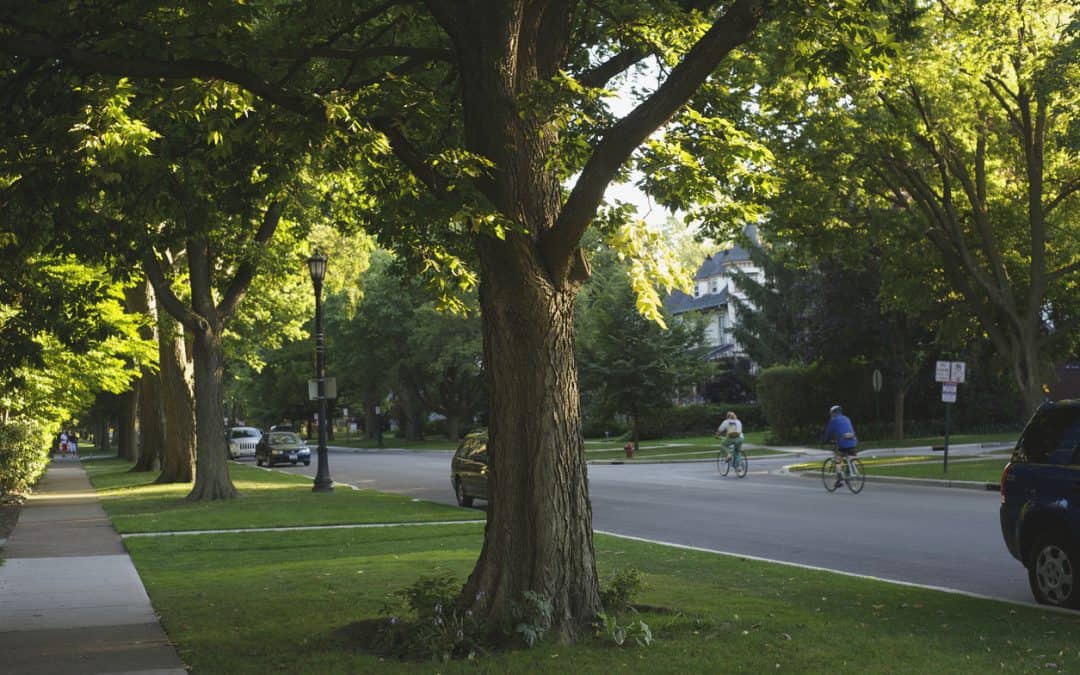Bio (nature) philia (love). Biophilic design refers to design that is oriented to an inherent human understanding and attraction toward nature. In real estate we experience this in diverse ways. The easiest way of understanding how nature affects us is measured in how we feel. When we stand looking out upon a view of nature, whether it is a coastal waterfront ocean view, a ski town mountain view or the approach to the front door of a home on a tree-lined street, the first indication of good biophilic character is a feeling of comfort.
In Sotheby’s recent report about 2021 trends in real estate, both private and public natural spaces are defined as trending in demand characteristics in real estate. This has always been the case at all levels of the marketplace. Listings lead with descriptions of bucolic views, panoramas, local green spaces and tree-lined streets.
When we work with clients they give us their wish list. They say we must have parking, no less than X number of bedrooms and bathrooms and a gorgeous kitchen. Rarely will they say it’s critical that we live on a tree-lined street. That said, when our customers arrive at a showing in a tree canopied neighbourhood, they feel better, they like it more and they’re willing to pay more.
In a study I presented at Grey to Green in 2014, I compared the sales data of four neighbourhoods in the City of Toronto. I examined streets with and streets without mature tree canopies. I found that not only did the houses on tree-lined streets sell for more, but they also sold less often. This is a market indication of the real estate value of biophilic features in real estate.
COVID-19 has created an awareness in the marketplace of the value of nature. Don Kottick, president and CEO of Sotheby’s International Canada says people “have become more appreciative of the impact of the natural environment on their own quality of life.”
Biophilic design is not a new concept. It is something that is said to be ingrained within the human understanding of the world. There are three categories of experience of biophilic design, design that is governed by and centred toward nature and peoples’ love of it.
Direct contact with the senses is one category of biophilia. This might be a garden where you can participate in nature. It may be an indoor water feature that you can see or hear. It includes connection to the outdoors and natural airflow from operable windows or balconies, hearing sounds such as the songs of the birds carried through the windows or seeing natural light and feeling unconditioned air pouring in from outside. We think home is where the heart is, but home is also where the “hearth” is – the protection and warmth of the fire is part of biophilic design.
Indirect contact with nature is another: this might include designs that mimic nature, natural shapes and natural colours, the mimicking of natural light or even the sounds of nature conveyed via speakers. Patterns that we find in nature are being used as an architectural feature. Indirect contact includes biomimicry and even art that depicts nature or contains natural colour or lines that reflect structures that our bodies understand intuitively as natural form.
Experience of place and space; taking refuge from the elements is what home is all about. The connection between indoor and outdoor spaces via windows “view sheds” is central to this aspect of biophilic design. In his seminal work A Pattern Language, Christopher Alexander examines the extent of design in a framework of understandable patterns. Alexander’s pattern language is reflected within biophilic design practice. The most frequently referenced experiences where this idea meets our everyday real estate practice is the concept of flow.
We will often refer to a space or a home as having good flow. Biophilic design shows this is about the connection between spaces and ease of way-finding.
All of these ideas are contained within the practice of biophilic design. These designs are understood intuitively by our bodies. We can feel it, we can sense it, we can smell it. We feel the love of nature when we experience good design, easy way-finding, good flow.
There is real estate value in nature. Not all forms of highest and best use are measured in frontage and land improvements. As a lover of nature, I believe there is often more value in untouched natural land. There is certainly an emerging market understanding that nature delivers quality of life benefits that are highly valued in the real estate market in Canada and around the world.

Chris Chopik is an influential housing industry innovator and a respected authority working at the intersection of housing, energy, resiliency and natural hazards. Chopik’s work includes an extensive exploration of the future of “Property Value in an Era of Climate Change” (2019) where he examines the financial impact of natural hazards on property values across North America. He holds a Master of Design, Strategic Foresight and Innovation from OCAD University.













